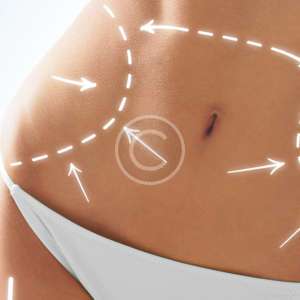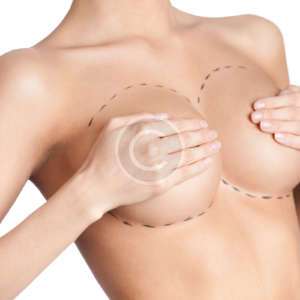
Tummy tuck surgery, also known as abdominoplasty, removes excess fat and skin and, in most cases, restores weakened or separated muscles creating an abdominal profile that is smoother and firmer.
A flat and well-toned abdomen is something many of us strive for through exercise and weight control. Sometimes these methods cannot achieve our goals.
Consultation
During your tummy tuck consultation, be prepared to:
- To answer questions about current and past medical conditions. Tell your doctor if you are allergic to any medications. If your desire for a tummy tuck is related to weight loss, your doctor will likely ask detailed questions about your weight gain and loss.
- Do a physical exam. To determine your treatment options, the doctor will examine your abdomen. The doctor might also take pictures of your abdomen for your medical record.
- Discuss your expectations. Explain why you want a tummy tuck, and what you’re hoping for in terms of appearance after the procedure.
Procedure
Medications are administered for your comfort during the surgical procedure. The choices include local, intravenous sedation or general anaesthesia. Your doctor will recommend the best choice for you. Correction of protruding ears uses surgical techniques to create or increase the antithetical fold (just inside the rim of the ear) and to reduce enlarged conchal cartilage (the largest and deepest concavity of the external ear). Incisions for otoplasty are generally made on the back surface of the ear.
When incisions are necessary on the front of the ear, they are made within its folds to hide them. Internal, nonremovable sutures are used to create and secure the newly shaped cartilage in place.
External stitches close the incision. Techniques are individualized, taking care not to distort other structures and to avoid an unnatural « pinned back » appearance.
If you’ve decided on a tummy tuck, you should know that there are three different types.
- Mini: A mini-abdominoplasty targets skin that hangs around the navel. This procedure removes excess skin and fat from this area to reduce bulge in the lower abdomen. A mini tummy tuck doesn’t involve the repair of abdominal muscles.
- Traditional: When you think of a tummy tuck, you probably think of a traditional abdominoplasty. During a traditional tummy tuck, abdominal muscles stretched during pregnancy or weight fluctuations are repaired and excess skin and tissue are removed from the abdomen. A traditional tummy tuck can be combined with liposuction.
- Extended: An extended abdominoplasty is a great choice for those who have lost a significant amount of weight. People who choose an extended abdominoplasty often have dramatic results. During an extended abdominoplasty, excess skin and tissue are removed from the abdomen, hips, thighs, and back. Muscles in the back, flanks, and abdomen are repaired and toned.
Risks
Is it safe ?
Tummy tuck risks include :
- Asymmetry
- Bleeding
- Deep vein thrombosis, cardiac and pulmonary complications
- Fatty tissue found deep in the skin might die (fat necrosis)
- Fluid accumulation (seroma)
- Infection
- Numbness or other changes in skin sensation
- Poor wound healing
- Recurrent looseness of skin
- Skin discoloration and/or prolonged swelling
- Suboptimal aesthetic result
These risks and others will be fully discussed prior to your consent. It’s important that you address all your questions directly with your plastic surgeon.
Is it painful ?
There will be some discomfort after a tummy tuck, with the worst discomfort experienced within the first week. On a scale of 1 – 10, pain is often estimated at around a 6-7 for the first few days to a week, reducing to around a 3 – 4 in the second week.
This would, of course, depend on the individuals. During a tummy tuck surgery, you’ll be under general anesthesia — which makes you completely unconscious and unable to feel pain
recovery
Once you’re at home, you will need to rest for 10 – 14 days, to recuperate fully. You will then need to take at least four weeks off work, whilst avoiding exercise and any strenuous activity.
You should also avoid driving for at least 4 weeks after the procedure and try to ensure you keep your knees bent whilst you sleep, to avoid putting any unnecessary strain on your stitches. Typically, full recovery should take around 6 weeks, but it may take up to 9 months to see the full results of the procedure.
results
The benefits from your tummy tuck will not be immediately noticeable. In fact, over the first several weeks, redness, bruising, stiffness, and swelling are common. This will slowly resolve over the next four to six weeks and the results will start to show. However, residual swelling can linger for six months or longer. A temporary numbness or a loss of sensation along the incision line is normal but will slowly resolve.
While you should be feeling close to your old self after a few months, it can take a full year before the stomach has finished healing and the complete results of surgery can be seen.
The results of the procedure differ from one individual to another as the problem is never the same. However, one should expect the following results after full healing :
- Natural looking slim and toned abdomen
- No excess skin around the abdomen
- Confident you!
Things to keep in mind
- As known Tummy tuck results are considered permanent in that the skin and fat cells that Surgeon removes during the procedure cannot grow back. However, significant weight fluctuations can cause the remaining abdominal skin to lose additional elasticity and start to sag again
- A tummy tuck is not a weight loss measure. You should lose weight before a tummy tuck, and not rely on the surgery to resolve any long-standing weight loss issues. Additionally, if you’ve already lost a dramatic amount of weight—good for you! —you should postpone an abdominoplasty for six months up to a year, to be sure your new weight is stable







